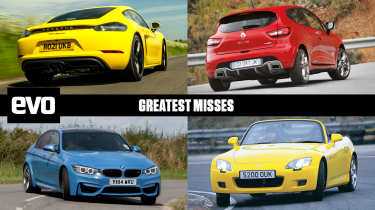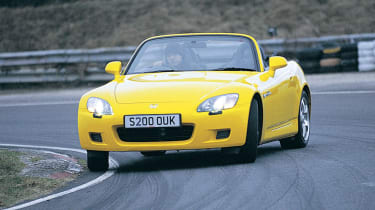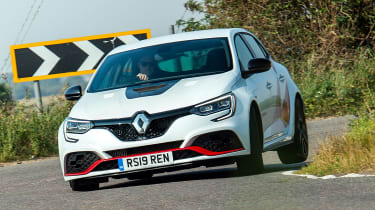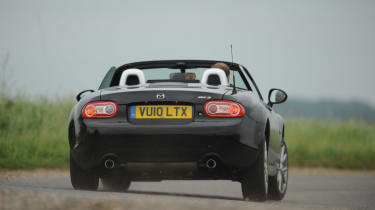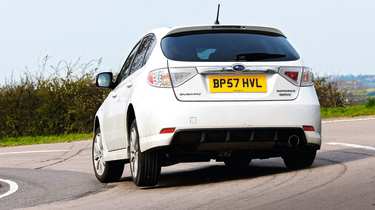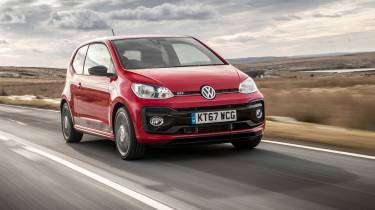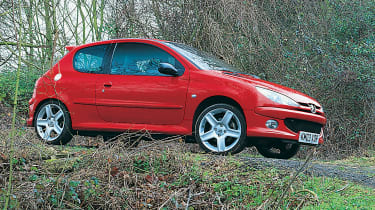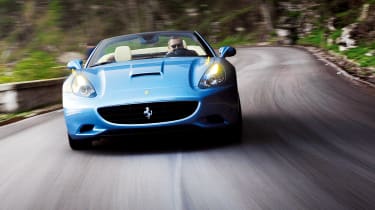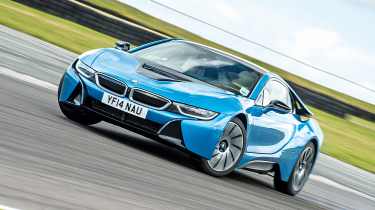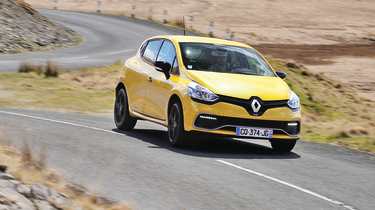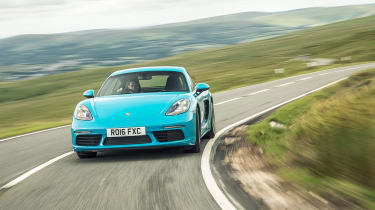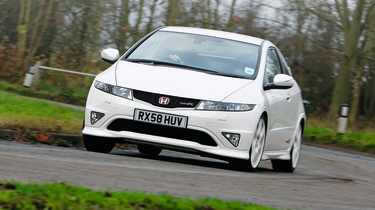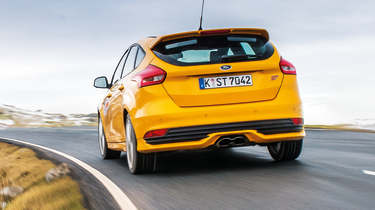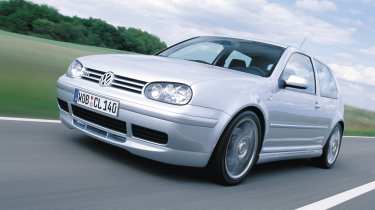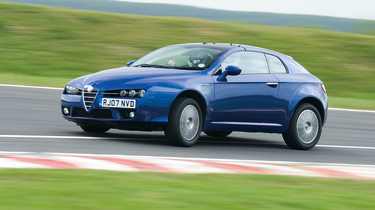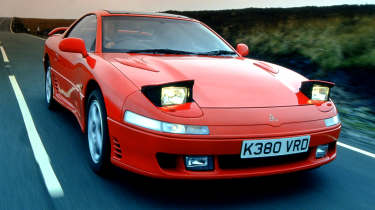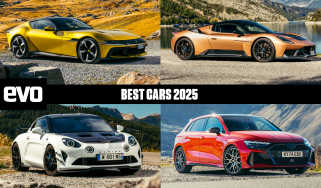Motoring’s greatest misses: The cars that missed the mark
Some cars are okay, others good and some truly great. Then there are those that promise so much and deliver very little, if nothing at all
evo has been testing cars since 1998, the majority being the very best of the best or as close to perfection as you can get. However, we’ve also been exposed to some duffers over the years, too. In fact, there have been quite a few, and most are better forgotten.
Then there are those cars that are neither great, nor bad, but somewhere in between – the cars we had high hopes for but fell disappointingly short. They’re the “greatest misses”, cars which could have been spectacular but whose engines, handling, or abilities let them down against more talented opposition or even their own predecessors.
Which are the, er, greatest Greatest Misses? In our minds they are the cars listed here. They’re not bad cars (well, almost none of them), and some are even pretty good – but they could all have been so much better.
Honda S2000
We had such high hopes. Launched in 1999, the Honda S2000 followed hot on the heels of both the Integra and Accord Type Rs, not to mention relatively fresh memories of the NSX. A front-engined, rear-drive Honda roadster with a 9000rpm limiter had to be perfect, right? Yet somehow, Honda fumbled the ball. It looked great inside and out, but when you got in you found you were sitting too high.
Its engine, which promised so much, delivered very little. It felt harsh and needed to be driven at maximum revs all the time to avoid it feeling woefully weak and deficient in the torque area, which it was. Add in steering that was devoid of feel and therefore not great for controlling the sometimes knife-edge handling and the S2000 not only missed the market but the opportunity to join the Honda greats that had gone before and came after it.
BMW M3 (F80)
Following up the V8-powered E90 M3 was never going to be an easy task, and while the turbocharged inline six cylinder engine fitted to the 2014’s fifth-generation M3 made a healthy 425bhp (and 406lb ft of torque, massively out-punching the V8), things proved less promising underfoot.
In early tests we found that the rear end lacked control, and when we included an M3 in 2014’s car of the year test, in wet weather, the low-feel steering, untrustworthy front end, and big lumps of torque arriving all at once gave it spooky handling. Thankfully, BMW M later improved the car with the Competition package during the car’s mid-life facelift, but the early one left a bad taste leaving a black mark in BMW M’s history.
Renault Sport Megane Trophy-R
While Renault has a spectacular hot hatchback heritage, it still missed the mark every once in a while. The original Renault Sport Megane 225 was nothing special in its launch form, the Clio 197 could’ve been better, and then there was 2019’s Trophy-R.
The RS model based on the fourth-generation Megane already felt a bit disjointed (until we later drove a basic “Sport” chassis car, which was great), and while the Trophy-R had all the right bits – carbon bonnet, wildly expensive carbon brakes and wheels – on UK roads, where previous Megane R models excelled, the latest - and last - red hot Renault Sport Megane was simply too stiff and uncompromising to be treated as a true great. Fabulous on track, but probably best left there.
Mazda MX-5 (Mk3)
Falling short of expectations is a common theme among our Greatest Misses, and the third-generation Mazda MX-5 wasn’t immune when it arrived in 2005. A little larger than its predecessors, it also seemed more serious on paper, but its new 2-litre engine felt flat, the steering inconsistent, and the handling had lost its fluidity and predictability.
Later testing showed the 1.8 was friendlier but not enough to make up for its lack of ESP, and that it was very sensitive to setup. Later still, Mazda improved it, and late Mk3s were as good as MX-5s have ever been – even giving early Mk4s a hard time.
Alfa Romeo 4C
The basic ingredients were all there: exotic styling, a carbon tub, and a kerbweight that wouldn’t seem out of place on an Elise. Unassisted steering was promising too – surely its feedback would be spectacular. And yet, the 4C will go down as not only one of the most disappointing Alfas of all time but also one of the most disappointing sports cars, too.
We found the 1.75-litre turbocharged four “flatulent, laggy, [and] lethargic”, and the steering, through one of the ugliest wheels ever put in a car, spent more time fighting cambers through the 4C’s wonky geometry than it did delivering feedback. Then Alpine came along with its own lightweight sports car in 2017 and showed Alfa Romeo - and others - how to do it properly.
Subaru Impreza WRX
You didn’t need an imported Subaru WRX STI, a 22B, an RB5 or a P1 to experience a great Impreza – the earliest Turbo 2000 sold in the UK was still fantastic. That was no longer the case when the hatchback “GE” Impreza WRX arrived in 2007.
Not only did it look “frumpy and bland”, as we remarked at the time, but its 227bhp output and poor body control were well off the pace in a world of seriously impressive hot hatchbacks such as the Mk5 Golf GTI, Focus ST and Megane RS that were available at the same time. STI versions were a big improvement, but the regular one was merely a three-star car.
Volkswagen Up GTI
Now to be clear, not everyone agrees with the Up GTI being a “greatest miss”, as demonstrated by the split opinions during evo’s 2018 Car of the Year test, when some judges loved it and others felt it was a little undercooked.
Certainly, for the sub-£14k or £139 a month it cost when new, it was hard to touch for fun – there simply wasn’t anything within three or four grand, and usually more, that was as likeable. But it’s also true that the Up GTI always felt a little reined-in, less effervescent than tiny hot hatches of old like the Citroen Saxo VTS or Suzuki Swift Sport, so we know it could have been so much better.
Mitsubishi Lancer Evolution X
Is it a coincidence that our least favourite Mitsubishi Evo arrived the same year as our least favourite Impreza WRX? That both brands abandoned the WRC around the same time (Mitsubishi in 2005, Subaru in 2008) suggests neither brand’s heart was really in it in the mid 2000s.
The Evo X, while promising on paper, lacked the infectious character and fun factor of its predecessors, seemingly attempting to capture some of the grown-up energy of say, an Audi RS4, but missing the mark on quality and usability while being tuneless and dead to drive. No homologation special kudos, either.
Peugeot 206 GTi 180
The Peugeot 206 GTi 180 was actually a four-star evo car at launch. It helped that it was comfortably better than the somewhat disappointing regular 206 GTi that had arrived in 1999, while the spectacular 106 and 306 GTis were still on sale to show up their new sibling. The trouble is, when the more potent 180 arrived in 2003, it did so into a world where the Renault Sport Clio 172 already existed, along with similarly fun small cars like the MINI Cooper S.
The Peugeot still didn’t really have the feistiness or feel we expected from the brand, and it didn’t help that Peugeot was in a phase of trying to distance itself from its heritage in an effort to push upmarket. The 208 GTI by PSE was a brief reprise for the Peugeot GTI but the never reached its previous high mark.
Ferrari California
The prospect of an “entry-level” Ferrari is always enticing, even if we know it’s still going to have a six-figure price tag and probably won’t come with Dacia-style unpainted bumpers. The California was essentially just that in 2008, complete with a naturally-aspirated 4.3-litre V8 and the first Ferrari with a dual-clutch gearbox.
The handling though was, as Dickie Meaden put it at launch, “all at sea”, feeling more at home pottering around than being driven like a Ferrari. The styling was also awkward. But it wasn’t really a Ferrari at all – the car had been conceived as a Maserati, and repurposed when the two brands split.
BMW i8
As the Audi A2 was to the supermini class, the BMW i8 was to premium sports cars: a vehicle that arrived too soon. With a 1.5-litre turbocharged three-cylinder at the heart of a plug-in hybrid powertrain, a CFRP tub, and styling that still hasn’t dated, the i8 was undoubtedly ahead of its time, but in its time, people didn’t really want it, and BMW sold only around 20,000.
It was good to drive, but perhaps not to the level its looks promised, feeling closer to a Cayman than the 911 it was priced against. A shame, not least because BMW’s hybrid flagship today, the 2.5-tonne BMW M5, seems like a step backwards conceptually.
Renault Sport Clio 200 Turbo
Renault spent good money developing cars like the 182 Trophy and 200 Cup, so when the fourth-generation Clio arrived and with it a Renault Sport model, it had to be a bit more sensible, while also designing a car with broader appeal.
As you can imagine, those goals don’t always tally with our own, and while certainly more usable – now five-door only, turbocharged, and with a dual-clutch gearbox, the new Clio 200 Turbo just wasn’t as fun as its predecessor. The later 220 Trophy was much improved, but the 200 is unlikely to be remembered the same fondness of its 172, 182 and 200 Cup predecessors.
Porsche 718 Boxster/Cayman 4cyl
It’s not that the four-cylinder versions of the Porsche Cayman and Boxster, in 2-litre and 2.5-litre form, were bad. Far from it in fact – the cars themselves were better than ever, and the new turbocharged engines were largely lag-free, and provided a mid-range punch that made sense of Porsche’s often too-long gearing.
But the new engines sounded like those of an old Beetle in a poor state of health, and philosophically the flat-four was such a comedown for a car that, since the launch of the Boxster in 1996, felt all the more exotic for having six cylinders. It’s a perfect illustration that the quality of a car’s performance is as important as the quantity.
Honda Civic Type R (FN2)
The UK never got the original “EK9” Civic Type R, but the EP3 generation car that arrived in 2001 was a performance bargain in its day, with a howling 200-horse VTEC engine and one of the best gearshifts in the business. The FN2 Civic R that followed was promising – while only a little more powerful, Honda tuned it for a little more torque, and the spaceship styling was striking.
But getting decent handling from the new space-efficient torsion-beam rear suspension meant a pretty punishing ride, and extra weight meant no more performance. Not one of the Type R classics then… though it did still have a fabulous gearshift.
Ford Focus ST (Mk3)
2013’s Fiesta ST will go down as one of the great fast Fords. Quick, fun and affordable, Ford sold loads of the things, and deservedly so. It sold a lot of 2015’s Focus ST too but other than the brand’s enduring popularity, that one was more confusing.
It was fun in small doses, but torque-steered like an old Escort RS Turbo, and the stiff suspension suited the car’s behaviour less than in the smaller Fiesta, for a disjointed and frustrating driving experience. Gallingly, this gen ST actually felt best in its diesel form – still quick, but less unruly and with 40mpg economy as a bonus.
Mk4 Volkswagen Golf GTI
The third-gen Golf GTI was pretty lacklustre, but 1997’s Mk4 GTI didn’t even deserve the badge. With just 115bhp from a 2-litre 8-valve four, it got to 60mph on the wrong side of ten seconds, and was a pudding in the corners. It looked nice in an (incredibly) understated kind of way and the interior made most rivals feel like Happy Meal toys, but hot it was not.
The later 150bhp 1.8T was quicker but still not especially fun. 2001’s BBS-shod, 180bhp 25th Anniversary car finally started to extract some potential and the VR6-powered R32 was better still, but the GTI wouldn’t truly be back until 2004’s Mk5 Golf GTI.
Alfa Romeo Brera
Some cars make it from the concept stage to production largely intact. Had the Alfa Romeo Brera done so, it would have been a low-slung, rear-wheel drive, 400bhp Maserati V8-powered instant classic.
What the Brera actually turned out to be was a cut-down Alfa 159 with front or all-wheel drive and a selection of engines that never felt quite up to motivating a car that weighed upwards of 1400kg (and well over 1600kg in some variants). Nor did it handle especially well. Prodrive later brought out some of its potential, and these “Brera S” are the ones to have, if you can find one.
Mitsubishi 3000GT
Some readers get very angry about evo’s dislike of the Mitsubishi 3000GT, but it’s a dislike that came across with the magazine’s founding team, who’d tested it during the days of Performance Car.
Against the likes of the Porsche 968, Mazda RX-7, Lotus Esprit Turbo and Nissan 300ZX, the overcomplicated and overweight (1740kg!) Mitsubishi failed to make the most of its technology – unlike the R32 Nissan Skyline GT-R the magazine had also recently driven. PC’s Peter Tomalin turned around an old phrase for the pithy verdict: “A lot of awful car for the money”.

